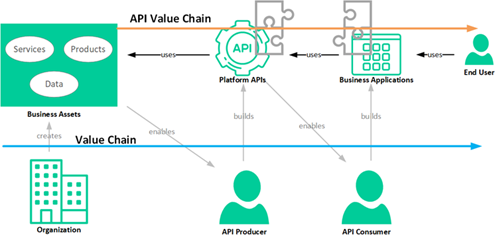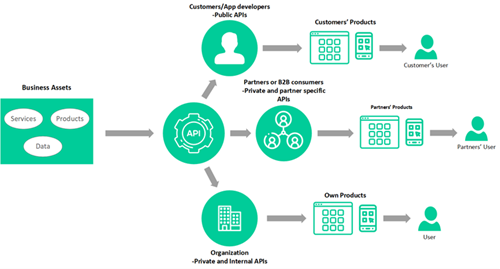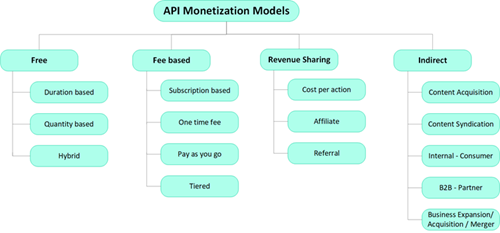Nowadays, API services are ruling the internet and business worlds, and it’s highly likely the adoption of this trend will only continue in the future. APIs are the main driving forces behind modern business growth and the backbone of almost all the business applications that currently exist. In a competitive world, where disruptive technologies are changing the way we work, APIs are enabling many businesses to put themselves on a sustainable footing. And, as ever, early adopters will have a competitive advantage. Many businesses are also finding out that APIs are connectors, simplifiers and gatekeepers.
APIs are great connectors of different technology ecosystems and organisations which create new opportunities, such as profitable partnerships with other organisations (through consuming other's data or selling data to others or white labelling of APIs for instance). They also help organisations to create their ecosystems.
APIs are also simplifiers, in that they help to shorten the time to market for a business and can improve the operational efficiency, which in turn, enables innovation for their consumers. With the help of APIs, consumers can create new products or quickly turn their project ideas into products.
APIs are gatekeepers too. They abstract or hide the complex business processes, infrastructures, data management, data protection (with regulation, compliance), overall security, and operational management behind the wall. The mantra for success is to derive business digital strategies from APIs and it is important to remember that it is never too late to start adopting APIs.
To get a better understanding of the API economy, we should understand API value chains and business models..
The API Value Chain
The value chain is a continuous process of transformation, such as a factory assembly line and it extends across all industries to allow different organisations to be involved in creating value. Each organisation is dedicated to a particular transformation task and deserves its place in the chain. The API value chain is a software-driven and automated specialisation process of the value chain. The value chain is formed as an end-to-end path, as shown in the image below as a blue line. The value increases through the value chain from left to right.

The application consumes APIs, which in turn uses business assets to deliver its functionality. The end-user consumption creates an API value chain from the business asset to the end-user, as can be seen through the orange line. The value increases incrementally through the API value chain from left to right.
Business assets are the starting point in the API value chain. Business assets are the fuel for any business, and they can be any data or business function (services, products for instance). APIs create a channel to expose business assets to consumers, so organisations need to identify their business assets to expose, their value and target audiences to convert them into APIs products. To identify asset value and target audience organisation can ask the following questions:
- What are the business assets that can be exposed as APIs and what is the value to the organisation?
- How does this benefit the API provider (an API provider can be a third party or asset owner)?
- Who are the potential users of these assets, and how would the users get access to these assets?
- How does the end-user benefit from using these assets?
- How easily can the end-user access and use it?
Once an organisation decides to open assets for exposure, the API producer discovers opportunities, builds APIs to use these assets. API producers can be the same organisation or another organisation that consumes these business assets. APIs are broadly categorised into either private or public APIs. Private APIs are used purely for internal purposes or integration with partners, so can be categorised into internal APIs and Partner APIs. Public APIs meanwhile can access these private APIs to build their products or consume them within the existing products.

API consumers build the business applications by using APIs for their end-users. Here, API consumers can be the same organisation or partners, or they can be application developers (who wants to build applications for their customers), depending on the API types.
End-users participate in the last part of the API value chain. They consume the business applications built with APIs.
The API value chain can increase throughout the process (moving from left to right on the diagram), which means there are lots of additional API producers, consumers, and end-users who can participate both vertically and horizontally. As it increases, it brings lots of business opportunities.
There are some variations within API value chains. These are:
Extended API value chain - two or more API producers will be involved horizontally to produce required APIs for consumers.
Long value chain - in this variation more API producers will be involved horizontally to produce required APIs for consumers.
Network value chain - in this variation, all three actors (API producers, consumers, and end-users) will be participating both vertically and horizontally. It creates a network across small value chains.
Business Models for APIs
The API Economy enables organisations to share their business assets through simple APIs with consumers and this brings lots of innovative ways to use the assets. This creates ‘API Monetisation’ when more revenues are generated. When API Monetisation is a success, it benefits all parties involved in the value chain. If not, there is no point in exposing the business assets, so API monetisation is one of the key elements in the API economy. The monetisation model should be selected based on the exposed assets' value and usage. Broadly, the API monetisation model is classified into four models:
Free - normally this model is used to expose the low-value assets to try out for marketing purposes. Sometimes high-value assets are also included in this model. This model helps the organisation to market through different channels and devices.
Fee-based - this model is used when exposed assets are of high value to the consumer. The consumer will pay for consumption depends on the pricing model.
Revenue Sharing - in this model, the organisation shares the revenue earned through the use of APIs with the consumers. This encourages the consumers to expand their business applications and customer base to bring more revenue to the API producers and consumers.
Indirect - in this model both API producer and consumer mutually benefit. The benefits may not be a direct revenue, but there is the possibility they can get assets (data through the collection) or benefit from cost cutting.
The following diagram shows the different models of API Monetisation and sub-models.

The API economy creates an evolutionary impact on the way business applications/products are built and consumed. Every business stands to benefit from participating in the API economy and creating sustainable operations.
Author: Sreenivasan Madhaiyan